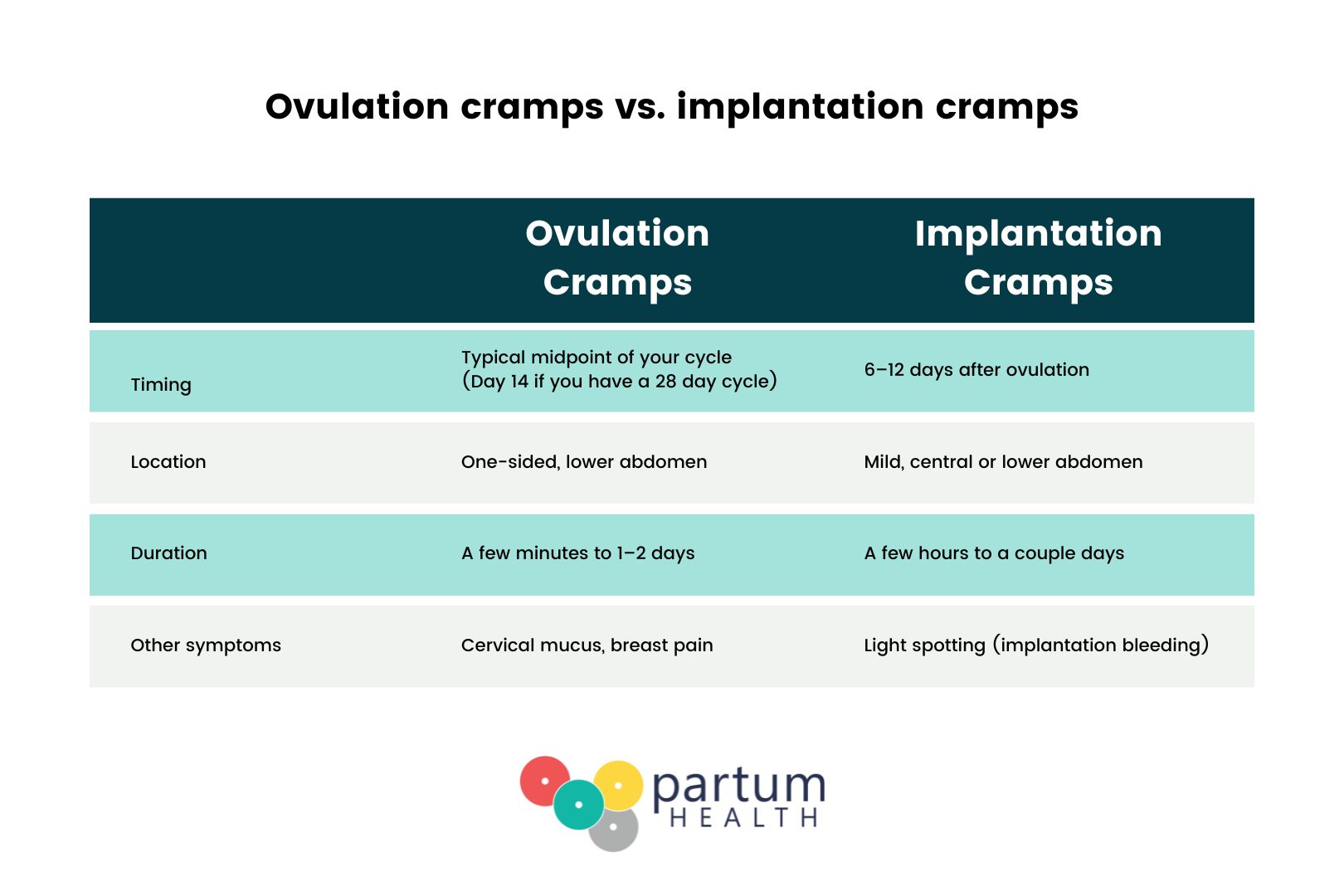
Medically reviewed by Dr. Melissa Dennis, MD, MHA, FACOG
Ever feel a twinge or cramp mid-menstrual cycle and wonder if it means you're ovulating? That mid-cycle ache has a name: mittelschmerz (German for "middle pain"). While not everyone feels ovulation pain, an estimated 1-2 in 5 menstruating individuals report this mid-cycle symptom. Understanding ovulation pain can give you valuable insight into your fertility.
In this post, we’ll break down what ovulation pain really means, how to tell it apart from other types of cramps, and what the science says about its link to pregnancy.
What is ovulation pain?
Ovulation pain is a one-sided, lower abdominal ache or cramp that occurs around the time your ovary releases an egg, usually about 14 days before your next period. Some people feel a sharp twinge; others report a dull, bloated feeling, and for a few, it’s intense enough to be mistaken for appendicitis.
This pain is called mittelschmerz and can last anywhere from a few minutes to a few hours, or even up to two days.
Ovulation pain symptoms
Everyone experiences ovulation a little differently, but the most common symptoms include:
- Cramps or a sharp pain, typically on one side of your lower belly
- Bloating or a feeling of fullness
- Breast or nipple tenderness
- Back pain, especially in your lower back
- Mild nausea or feeling sick
- Headache
You might notice the pain is more often on the right side. This ovary tends to ovulate more frequently, although both ovaries usually take turns. The right ovary has a slightly different blood supply and drainage pattern than the left. The right ovarian vein drains directly into the inferior vena cava, while the left drains into the left renal vein, which may impact hormone delivery and follicle development. Proximity to the liver may also influence hormone metabolism.
If you are experiencing severe ovulation pain, it’s a good to idea to visit your OB/GYN to assess your overall health and screen for other possible conditions.
Ovulation cramps vs. implantation cramps
Timing is key when trying to understand your cycle. Here’s how to tell the difference between ovulation pain and implantation cramps:

Ovulation pain causes
Ovulation pain happens for a few reasons:
- Follicle growth: As the follicle holding your egg swells, it can stretch the ovary’s surface.
- Rupture of the follicle: When the egg is released, fluid and sometimes a bit of blood spills out, irritating nearby tissues.
- Muscle contractions: Your fallopian tube contracts to help guide the egg along, which can cause cramping.
Ovulation pain relief
Most people don’t need treatment for ovulation pain, but if it’s uncomfortable, you can try comfort measures to find relief. These might include:
- A heating pad or warm bath
- NSAIDs like ibuprofen (avoid if you’re trying to conceive that day, as some studies suggest it could interfere with ovulation)
- Gentle yoga or stretching
- Hydration and rest
If your ovulation pain is severe, comes with vomiting or fever, or doesn’t go away after a day or two, talk to your doctor. In rare cases, it could be something more serious like endometriosis, an ovarian cyst, or an ectopic pregnancy.
Ovulation pain & fertility
Ovulation pain can be more than just an uncomfortable twinge if you use it as a helpful clue that you may be in your most fertile days. While not everyone experiences this symptom, those who do can use it as a natural signal that their body is likely releasing an egg. Understanding the timing and meaning behind ovulation pain can help you better align intercourse with your fertile window, which may boost your chances of conceiving.
How long after ovulation pain is the egg released?
The egg is typically released during or just after you feel ovulation pain. It’s a sign that you’re in your fertile window, which spans the five days leading up to ovulation and the day of ovulation itself.
But here’s the catch: an egg only lives for 12 to 24 hours once released. In order to get pregnant, sperm needs to be in the reproductive tract before or during that short ovulation window. Luckily, sperm can live for up to 7 days inside the body, so having sex in the days leading up to ovulation and on the day you feel ovulation pain gives you the best chance of conception.
When you feel ovulation pain, is it too late to conceive?
Not necessarily! Ovulation pain means your body is gearing up to, or is in the process of, releasing an egg. You may still be within the fertile window, especially if sperm is already present (remember; sperm can live up to 5 days inside the reproductive tract).
So if you feel mittelschmerz and are trying to conceive, it’s a great time to have sex that day or the next. A 2021 study found that timed intercourse around ovulation pain correlated with higher pregnancy rates, though more research is needed.
Does ovulation pain mean you are more fertile?
This is a common question and the short answer is: not necessarily, but it’s a good sign that you're ovulating. Ovulation pain doesn’t mean you’re more fertile than someone who doesn’t feel it. Some people just have more sensitive nerve endings or a stronger inflammatory response.
However, recognizing ovulation pain can help you better predict your fertile window, especially if you're not using ovulation predictor kits or tracking cervical mucus.
Ovulation pain and pregnancy success
While ovulation pain itself doesn’t guarantee conception, it can be a helpful fertility cue. In fact, some studies have shown that people who track ovulation symptoms can better time intercourse and improve their chances of pregnancy.
If you're noticing consistent ovulation pain and timing sex around it, you might be giving yourself a natural advantage.Ovulation pain is your body’s way of signaling that the fertile window is open. While it doesn’t directly boost fertility, it’s a helpful cue to start trying if you’re hoping to conceive.
If you’re tracking ovulation, tuning into symptoms like cramps, bloating, breast pain, or back pain can offer one more layer of insight. But if you’re not sure when (or if) you’re ovulating, a conversation with your OB-GYN or a fertility specialist is a great next step.








Related articles

Let us care for you
Treat yourself to a better fertility, pregnancy and postpartum experience.











